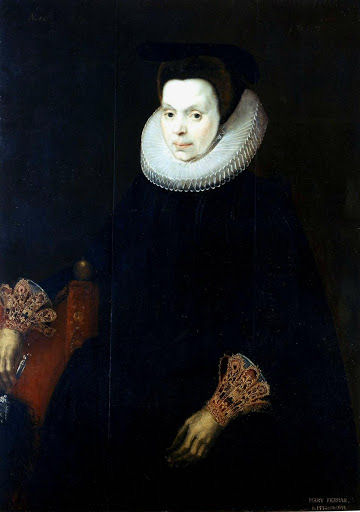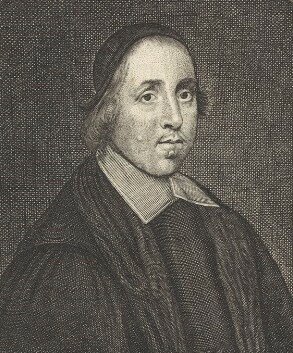|
Robert Mapletoft
Robert Mapletoft (25 January 1609 – 20 August 1677) was an English people, English churchman and academic, Master of Pembroke College, Cambridge and Dean of Ely. Life He was son of Hugh Mapletoft, rector of North Thoresby, Lincolnshire, was born there on 25 January 1609, and educated at the grammar school at Louth, Lincolnshire, Louth. He was admitted a sizar of Queens' College, Cambridge, on 25 May 1625, and graduated B. A. in 1628, M.A. 1632, B.D. 1639, D.D. 1660. He was elected fellow of Pembroke College on 8 January 1631, and became chaplain to Bishop Matthew Wren, who till his death was his friend and patron. On Wren's recommendation he was presented to the rectory of Bartlow, Cambridgeshire, by Charles I in 1639, the king exercising the patronage by reason of the outlawry of the patron, Henry Huddleston. At the parliamentary visitation of the university in 1644 he was ejected as a malignant and a loyalist. After his ejection, he lived quietly, at one time in the house of Si ... [...More Info...] [...Related Items...] OR: [Wikipedia] [Google] [Baidu] |
English People
The English people are an ethnic group and nation native to England, who speak the English language in England, English language, a West Germanic languages, West Germanic language, and share a common history and culture. The English identity is of History of Anglo-Saxon England, Anglo-Saxon origin, when they were known in Old English as the ('race or tribe of the Angles'). Their ethnonym is derived from the Angles, one of the Germanic peoples who migrated to Great Britain around the 5th century AD. The English largely descend from two main historical population groups the West Germanic tribes (the Angles, Saxons, Jutes and Frisians) who settled in southern Britain following the withdrawal of the Ancient Rome, Romans, and the Romano-British culture, partially Romanised Celtic Britons already living there.Martiniano, R., Caffell, A., Holst, M. et al. Genomic signals of migration and continuity in Britain before the Anglo-Saxons. Nat Commun 7, 10326 (2016). https://doi.org/10 ... [...More Info...] [...Related Items...] OR: [Wikipedia] [Google] [Baidu] |
Spital-in-the-Street
Spital-in-the-Street is a small hamlet in the West Lindsey district of Lincolnshire, England. It is situated on the A15 road (Roman Ermine Street), north from Lincoln, east from Gainsborough, and north from the A15 and A631 crossroad at Caenby Corner. Nearby villages include Hemswell to the west, Glentham to the east, and Glentworth to the south-west. History Spital-in-the-Street lies on Ermine Street, a Roman road that runs in a straight line for between Lincoln and the Humber Estuary, passing through no villages north from Lincoln until Broughton away. The first part of its name, "Spital", comes from the ancient hospital for the poor which was situated here, having its origins in a Hermitage. Hermits, or 'Eremites' dwellers in the ''eremos'' or wilderness, commonly placed their Hermitages in remote spots, often on highways, to extend hospitality to travellers. The chapel attached to the hermitage was dedicated to St Edmund. Edward II granted a licence for land ... [...More Info...] [...Related Items...] OR: [Wikipedia] [Google] [Baidu] |
John Mapletoft
John Mapletoft (1631–1721) was an English clergyman and physician. Life His father was Joshua Mapletoft, vicar of Margaretting and rector of Wickford, Essex, and his mother Susanna, daughter of John Collet by Susanna, sister of Nicholas Ferrar of Little Gidding, Huntingdonshire. She afterwards married James Chedley, and, dying on 31 October 1657, was buried at Little Gidding. John was born at Margaretting on 15 June 1631. On the death of his father in 1635 he was taken to the Little Gidding community, where he was brought up by Nicholas Ferrar, his godfather. In 1647 he was sent by his uncle, Robert Mapletoft, to Westminster School, was entered as a pensioner at Trinity College, Cambridge, on 21 May 1648, and was elected to a Westminster scholarship there in 1649. He graduated B.A. in January 1652, M.A. in 1655, and became fellow of his college on 1 October 1653. He was incorporated B.A. at Oxford on 11 July 1654. On 12 May 1652 he was admitted a student of Gray's Inn. From ... [...More Info...] [...Related Items...] OR: [Wikipedia] [Google] [Baidu] |
Little Gidding Community
The Little Gidding community was an extended family and religious group based at Little Gidding, Huntingdonshire (now in Cambridgeshire), England, in existence from the middle of the 1620s to the later 1650s. It gained attention in its time because of the interest Charles I of England showed in it. In the 19th century associated buildings were restored; T. S. Eliot was attracted to it as an examplar of religious life in the Church of England, and subsequently made it prominent by his poem ''Little Gidding'', one of the ''Four Quartets''. Foundation Little Gidding near Sawtry was a small village when it was the site chosen by Nicholas Ferrar and his mother Mary Ferrar for a new Ferrar family home: they were then retreating from adverse events in the London and court circles. There was an existing church, in a poor state of maintenance, and a life of work and prayer was set up. Background In 1620, Esmé Stewart, Earl of March sold the manor of Little Gidding to Thomas Sheppard. ... [...More Info...] [...Related Items...] OR: [Wikipedia] [Google] [Baidu] |
Nicholas Ferrar
Nicholas Ferrar (22 February 1592 – 4 December 1637) was an English scholar, courtier and businessman, who was ordained a deacon in the Church of England. He lost much of his fortune in the Virginia Company and retreated with his extended family in 1626 to the manor of Little Gidding, Huntingdonshire, for his remaining years, in an informal spiritual community following High Anglican practice. His friend the poet and Anglican priest George Herbert (1593–1633), on his deathbed, sent Ferrar the manuscript of ''The Temple'', telling him to publish the poetry if it might "turn to the advantage of any dejected poor soul." "If not, let him burn it; for I and it are less than the least of God's mercies." Ferrar published the verses in 1633; they remain in print. Early life Nicholas Ferrar was born in the City of London, England the third son and fifth child (of six) of Nicholas Ferrar and his wife Mary Ferrar (''née'' Wodenoth). He is sometimes identified as Nicholas Ferrar the Yo ... [...More Info...] [...Related Items...] OR: [Wikipedia] [Google] [Baidu] |
Anne Hyde, Duchess Of York
Anne Hyde (12 March 163731 March 1671) was Duchess of York and Albany as the first wife of James, Duke of York, who later became King James II and VII. Anne was the daughter of a member of the English gentry – Edward Hyde (later created Earl of Clarendon) – and met her future husband when they were both living in exile in the Netherlands. She married James in 1660 and two months later gave birth to the couple's first child, who had been conceived out of wedlock. Some observers disapproved of the marriage, but James's brother, King Charles II of England, wanted the marriage to take place. Another cause of disapproval was the public affection James showed toward Anne, such as kissing and leaning against each other, which was considered improper behaviour from man to wife during the seventeenth century. James and Anne had eight children, but six died in early childhood. The two who survived to adulthood were future monarchs, Mary II and Anne. James was a known philanderer ... [...More Info...] [...Related Items...] OR: [Wikipedia] [Google] [Baidu] |
Mark Frank (theologian)
Mark Frank or Franck (1613–1664) was an English churchman and academic, Master of Pembroke College, Cambridge. Life He was baptised at Little Brickhill, Buckinghamshire, and was admitted pensioner of Pembroke College, Cambridge, 4 July 1627. He was elected to a scholarship in 1630, and to a fellowship 8 October 1634, having become M.A. the same year. In 1641 he became B.D., and was chosen junior treasurer of his college, and senior treasurer in 1642. He had attracted the favourable notice of Charles I by a sermon he preached at Paul's Cross before the lord mayor and aldermen in 1641 on Jeremiah xxxv. 18-19, which the king commanded to be printed. In this sermon he propounds the Rechabites as an example of obedience; 'It is a usual thing nowadays,' he says, 'to direct our governours what to do, what to read, what to command; then, forsooth, we will obey them.' In 1644 he was ejected as a malignant by the parliamentary visitors, on his refusal to take the Solemn League and Covena ... [...More Info...] [...Related Items...] OR: [Wikipedia] [Google] [Baidu] |
Soham
Soham ( ) is a town and civil parish in the district of East Cambridgeshire, in Cambridgeshire, England, just off the A142 between Ely and Newmarket. Its population was 10,860 at the 2011 census. History Archaeology The region between Devil's Dyke and the line between Littleport and Shippea Hill shows a remarkable amount of archaeological findings of the Stone Age, the Bronze Age and the Iron Age. A couple of hoards of bronze objects are found in the area of Soham, including one with swords and spearheads of the later Bronze Age as well as a gold torc, retrieved in 1938. A large Anglo-Saxon settlement was discovered on land between Brook Street and Fordham Road, next to Roman remains in the old Fisky's Hill area and former allotment site in 2013 and onwards. During the establishment of the Fordham Road cemetery, in the late 1800's, burial remains were also found with several high-status grave goods, including a girdle hanger, beads and Jewlery. These items are now housed ... [...More Info...] [...Related Items...] OR: [Wikipedia] [Google] [Baidu] |
Nottinghamshire
Nottinghamshire (; abbreviated Notts.) is a landlocked county in the East Midlands region of England, bordering South Yorkshire to the north-west, Lincolnshire to the east, Leicestershire to the south, and Derbyshire to the west. The traditional county town is Nottingham, though the county council is based at County Hall in West Bridgford in the borough of Rushcliffe, at a site facing Nottingham over the River Trent. The districts of Nottinghamshire are Ashfield, Bassetlaw, Broxtowe, Gedling, Mansfield, Newark and Sherwood, and Rushcliffe. The City of Nottingham was administratively part of Nottinghamshire between 1974 and 1998, but is now a unitary authority, remaining part of Nottinghamshire for ceremonial purposes. The county saw a minor change in its coverage as Finningley was moved from the county into South Yorkshire and is part of the City of Doncaster. This is also where the now-closed Doncaster Sheffield Airport is located (formerly Robin Hood Airport). In 20 ... [...More Info...] [...Related Items...] OR: [Wikipedia] [Google] [Baidu] |
Clayworth
Clayworth is a village and civil parish in Nottinghamshire, England. At the time of the 2001 census it had a population of 319, increasing to 419 at the 2011 Census. The village is located north-east of Retford, on the River Idle. Clayworth appears as ''Clavord'' in the Doomsday Book, where 37 households were registered in the parish, which in the context of the Doomsday Book was considered to be a large population. At that time Clayworth paid low amounts of tax at 2 geld units. By 1769 Clayworth appears as Cloworth. Clayworth was described in John Bartholomew's ''Gazetteer of the British Isles'' of 1887 as having a population of 439, with 2,076 acres of land. Toponymy Heinrich Mutschmann, writing in 1913, thought that the place-name Clayworth referred to the ''clay'' soil of the township. More modern scholarship however inclines to the view that the name seems to contain the Old English word, ''clawu'', a claw + ''worð '' (Old English), an enclosure, so 'Claw of land encl ... [...More Info...] [...Related Items...] OR: [Wikipedia] [Google] [Baidu] |





